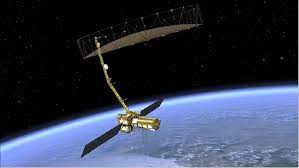US-India mission to send radar to study changes in ecosystems
Our Bureau
Washington, DC
A US-India joint mission will help researchers explore how changes in Earth’s forest and wetland ecosystems are affecting the global carbon cycle and influencing climate change. NASA said that in collaboration with ISRO (Indian Space Research Organisation), it will launch the NISAR (NASA-ISRO Synthetic Aperture Radar) radar satellite mission early next year.
The mission will offer detailed insights into two types of ecosystems – forests and wetlands – vital to naturally regulating the greenhouse gases in the atmosphere that are driving global climate change.
When in orbit, NISAR’s sophisticated radar systems will scan nearly all of Earth’s land and ice surfaces twice every 12 days, it said. “The data it collects will help researchers understand two key functions of both ecosystem types: the capture and the release of carbon.” Noting that forests hold carbon in the wood of their trees; wetlands store it in their layers of organic soil, JPL said disruption of either system, whether gradual or sudden, can accelerate the release of carbon dioxide and methane into the atmosphere.
Forests hold carbon in the wood of their trees; wetlands store it in their layers of organic soil. Disruption of either system can accelerate the release of carbon dioxide and methane into the atmosphere. Tracking these land-cover changes on a global scale will help researchers study the impacts on the carbon cycle.

























